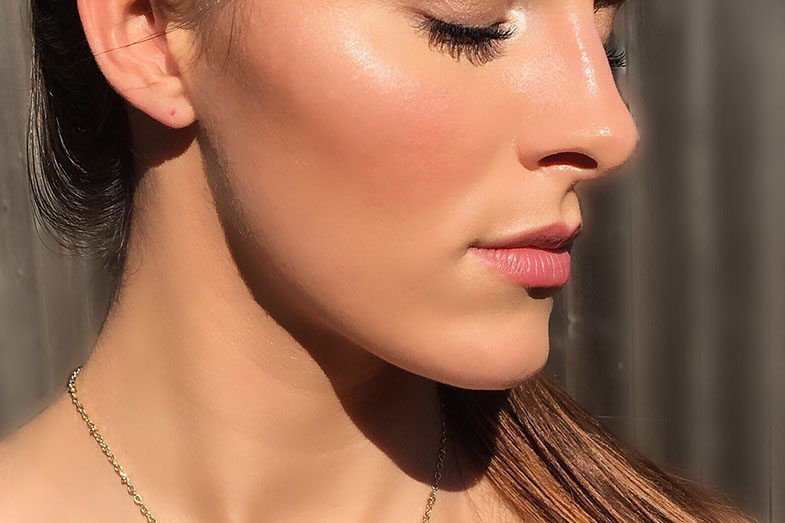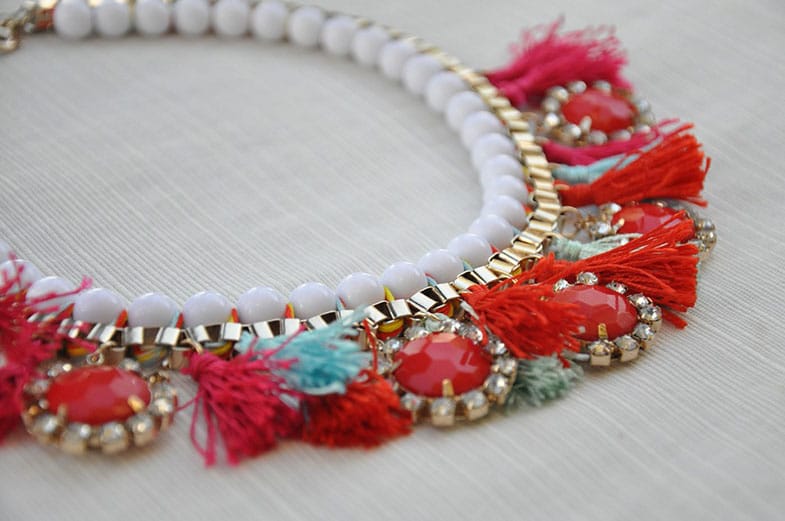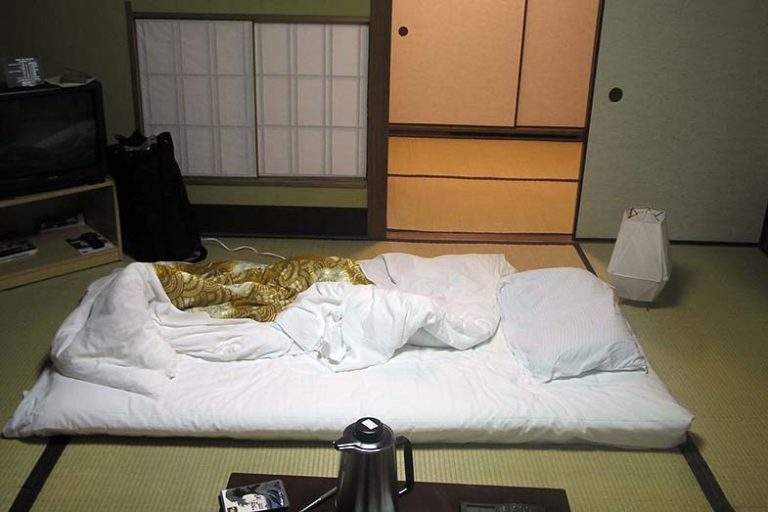Is It Safe to Sleep with a Necklace On?
Disclosure: We may get commissions for purchases made through links in this post.
People might think that it’d be weird to sleep with a necklace on. However, this is not uncommon, especially if the necklace is meaningful to that person.
Is it safe to sleep with a necklace on? There are all sorts of necklaces you can get, and the type of necklace you have will depend on whether they are safe to sleep with or not. A perfect example is the spiked collar necklace. This is a kind that you might not want to sleep with for obvious reasons.
However, not all necklaces are dangerous, even if they do appear to be harmful if slept on. What matters is how much the necklace irritates you while you sleep and toss about the night.

The History of Necklaces
Necklaces are known for their beauty and elegant looks. But, necklaces are more than what meets the eye. The history of the necklace is a fascinating one. The earliest necklaces were made of materials that man could make out of just from his surroundings. Organic materials such as pebbles, rocks, wood, feathers, bones, horns, claws, and also teeth were commonly derived from hunting and were made into strings.
Soon, precious stones and beads of different colors were ornamented and were made into long chains that made them look like necklaces. Over time, necklaces that were more polished and shiny began coming into the picture, such as the clay/terra-cotta, glass (amber/quartz), metal, diamonds, and pearls. These materials were chipped, rubbed, shaped, and worked all by hand to look more attractive. This is reflective of how advanced art is even in the prehistoric age.
Necklaces as a Commodity
Back then, beads were found to be useful in many ways. When barter was the type of currency, beads were also in trade. Archaeologists state that these not only trace the travels of humans but also determine how civilized a nation was.
Aside from beads, what primarily emerged as what is now known as a necklace was the chain. It functioned as something that held ornamental beads, precious stones, and graduated decors ass pendants. The chain is said to have originated from ancient times in which it symbolized power and honor. By the 19th century, the necklace resurfaced with chains as an independent ornament for pendants, seals, watches, and even eyeglasses.
Even today, you can still purchase a necklace with ancient designs, such as the Handmade Sunrise Pendant Necklace (view on Amazon). It is made up of three metal elements – copper, brass, and silver. This is an excellent example of how nature relates to jewelry.
What Makes a Necklace a Necklace?
Flexibility is one of the necklace’s major components. It is composed of a string-like material called a chain and adorns with ornaments suspended on the neck called pendants. It is worn on the neck as a complement to the neckline of an outfit. A necklace can take on many forms and sizes. They can be made up of diverse materials that are either handcrafted or manufactured.
Pendants and chains are what are commonly composed of a necklace. These are fashion pieces once independent from each other, and each has a timeline of their own when it came to popularity.
As much as there are a plethora of options to customize pendants and ornaments, there are also different types of chains (referring to the material and how the material was forged or made). Also, there are various kinds of necklaces (how the necklace was styled when matched with the neckline of an outfit).
Types of chains include the following:
- Anchor/mariner chain (or solid flat mariner chain)
- Puffed mariner chain
- Ball/bead chain
- Box chain
- Cable chain
- Curb chain
- Rope chain
- Singapore chain
- Snake chain
- Wheat chain
These varieties cater to the preference of the one wearing it. Feminine designs would include the Singapore and rope chain, as they come with chains that are intricate, small, and dainty.
On the other hand, different types of necklaces were also envisioned to match the outfits of men and women in that era, especially in the couture culture. Some of the following types date back to the age where women wore dresses as daily staples and matched their hats, necklaces, and shoes with their day. Some of these are the graduated necklace, bib necklace, collar necklace, choker, lariat, opera, plastron, princess, string, tassel, matinee, thread, torque, and multicolored string.
Uses of Necklaces from the past to the Present

Early uses of necklaces lie somewhere along with the reasons for communication and adornments. Several factors provide an opportunity to get to know a particular culture’s technology, cultural practices, aesthetics, artistry, and social standing. The necklace was a staple in fashion, although it differs from one period to another. It did not only display decorative and stylistic features, but it also conveyed how much prestige a person holds during that time.
Notably, the durability of the materials used for the necklace was indicative of a person’s power, wealth, social status, and sophistication. While it was a given function of necklaces to be ornamental, it was once meant to be worn by women as evening attire. Necklaces were ordinarily worn with other accessories, such as brooches, bracelets, pendants, and tiaras.
In Today’s World
The efficiency of the necklace was emphasized more when fashion influences lowered the necklines of dresses, so necklaces were soon made to be more elaborate and remarkable. There is a science to it as there is to it an art.
Today, necklaces have transcended symbolism and traditional functions across cultures and groups. What once was an indigenous role is now a recurring trend and is enjoyed by both women and men. Indeed, the necklace outstood any piece of decoration and communication to express their dispositions in life. It did not only denote human connection and commitment, but it also conveyed how creative humans can be.
Materials used today for this type of jewelry include crochet/yarn, leather, ribbons, gemstones, pearls, and metals. These trends paved the way for necklaces to be used widely as good luck charms, talismans, and protection from illnesses, disasters, as well as perceived dangers or supernatural forces.
Notably, gold necklaces were also used as investments and savings brought out during weddings for the bride to wear, especially in Asian subcultures. Meanwhile, the string of pearl was regularly gifted to young American or British girls for their 16th birthday. The pearl looked prestigious so much so that to date, it still reigns as one of the most preferred ornaments in business and professional settings.
One of the perfect gift and a popular item chosen for young girls is the Pearl Source Freshwater Cultured Pearl Infinity Pendant Necklace (view on Amazon). It may not be a string of pearls, but its genuine single pearl gives just as much beauty combined with the silver infused infinity symbol.
Conclusion
The safety of wearing a necklace to sleep depends on the individual’s preference and of the necklace itself. Here are a couple of answers that are often searched regarding commonly worn necklaces.
Can You Sleep with a Tiffany Necklace or Gold Necklace On?
There is no indication of why you cannot sleep with these kinds of necklaces on. Gold, for example, is a very durable metal so that it can last a very long time. This is the same case with diamonds. However, if you want your jewelry to keep its shine, then storing it away each night will make the shine last longer.
Can You Sleep with a Cross Necklace or a Choker?
Just like a spiked collar necklace, it’s best to avoid sleeping with anything bulky, sharp, or tight, although not all of these designs are dangerous. If your cross is made of soft material, then it’s fine to keep it on. If your chocker is flexible, then this would also be safe to sleep with.
Conclusion – Is It Safe to Sleep with a Necklace On?
So, you can sleep with a necklace on. It is worth noting that you should still be aware of certain situations, like when you have children sleep with you. In these cases, it’s always better to be safe than sorry. It would be wise to take them off to avoid your precious necklace from being snapped off or from hurting your little ones.






